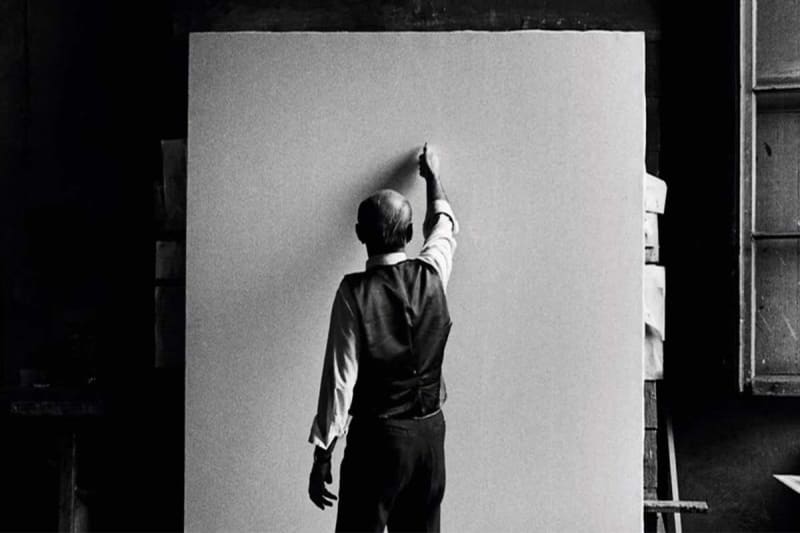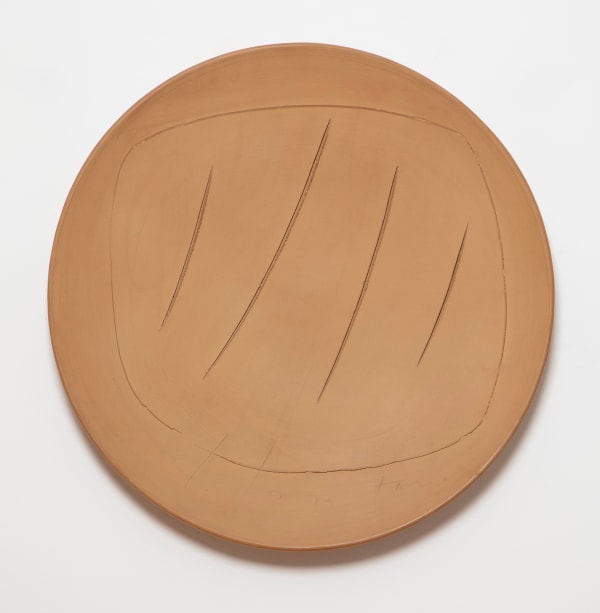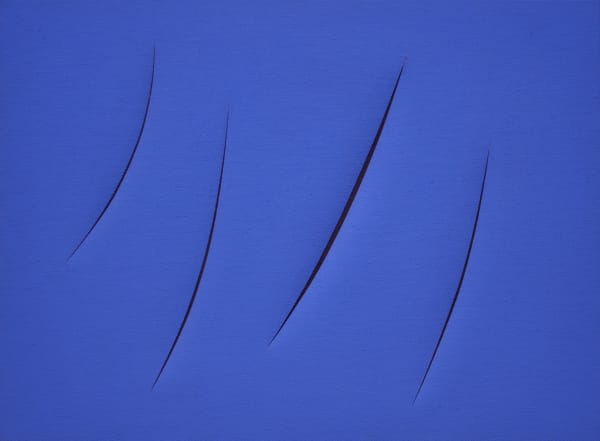Lucio Fontana was born in Rosario, Argentina, in 1899 and died in Comabbio, Italy, in 1968. He is celebrated for his radical rejection of traditional artistic conventions and his redefinition of the very nature of art itself. Trained initially as a sculptor, Fontana divided his time between Italy and Argentina prior to the outbreak of the Second World War. Seeking refuge from the conflict, he returned to Buenos Aires, where, in 1946, he founded the Altamira Academy – a centre for cultural exchange and intellectual innovation. Within this vibrant community of artists and theorists, the Manifesto Blanco (White Manifesto) was conceived in 1946. This seminal text provided the theoretical foundation for Spazialismo (Spatialist Movement), an avant-garde approach led by Fontana that aimed to integrate space, time, and matter into a new artistic language. He officially launched the movement in Milan with the publication of the first Primo Manifesto dello Spazialismo (Manifesto of Spatialism) in 1947.
On returning to Milan in 1948, Fontana began his groundbreaking Concetto spaziale (Spatial Concept) series, a body of work that would define his artistic legacy. In these works, monochrome canvases were slashed (tagli) or punctured (buchi), creating openings that revealed the void beyond the painted surface. These interventions, both physical and conceptual, challenged the long-held notion of the canvas as a two-dimensional and untouchable plane, exposing a new dimension of spatial reality. By cutting through the surface, Fontana introduced actual space into the artwork, dissolving the illusion of depth and evoking the infinite expanse that exists beyond material form. Fontana’s acts of cutting and piercing represented a response to the scientific and technological transformations of the twentieth century. In an era marked by rapid progress and cultural upheaval, he sought a new artistic language capable of expressing the limitless potential of modernity. His works, infused with a sense of exploration and discovery, positioned art not as a static object but as an evolving, dynamic force engaging directly with the energies of space and time.
Fontana studied at the Accademia di Belle Arti di Brera in Milan from 1928 to 1930. His work was first exhibited at the Venice Biennale in 1930 and continued to appear there regularly and he received the Grand Prize for Painting in 1966. Major retrospectives of his work have been held at the Musée d’Art Moderne de la Ville de Paris, Paris; Guggenheim Museum, Venice; Hayward Gallery, London; the Centre Georges Pompidou, Paris; Fundación ‘la Caixa’, Barcelona; Stedelijk Museum, Amsterdam; and the Whitechapel Gallery, London. Fontana’s works can be found in the permanent collections of more than 100 museums around the world, including the Galleria Nazionale d’Arte Moderna, Rome; Centre Georges Pompidou, Paris; Stedelijk Museum, Amsterdam; and the Museum of Modern Art (MoMA), New York.
Enquire
-
From De Chirico to Cattelan
A Survey of 20th Century Italian Art 8 Oct - 29 Nov 2012 LondonAlighiero Boetti Alberto Burri Pier Paolo Calzolari Enrico Castellani Maurizio Cattelan Sandro Chia Francesco Clemente Giorgio de Chirico Piero Dorazio Lucio Fontana Jannis Kounellis Piero Manzoni Fausto Melotti Mario Merz...Read more -
Heinz Mack/Lucio Fontana
6 Oct - 21 Dec 2010 LondonBen Brown Fine Arts is delighted to announce the opening of Heinz Mack /Lucio Fontana, a groundbreaking show placing the oeuvres of these two masters of 20th Century Art in...Read more -
LUCIO FONTANA
Paintings, Sculptures and Works on Paper 16 Jun - 14 Nov 2008 LondonRead more -
Caio Fonseca
New Paintings 17 Oct - 16 Dec 2005 LondonRead more -
Lucio Fontana
Paintings, Sculptures and Drawings 5 Feb - 20 May 2005 LondonRead more
-
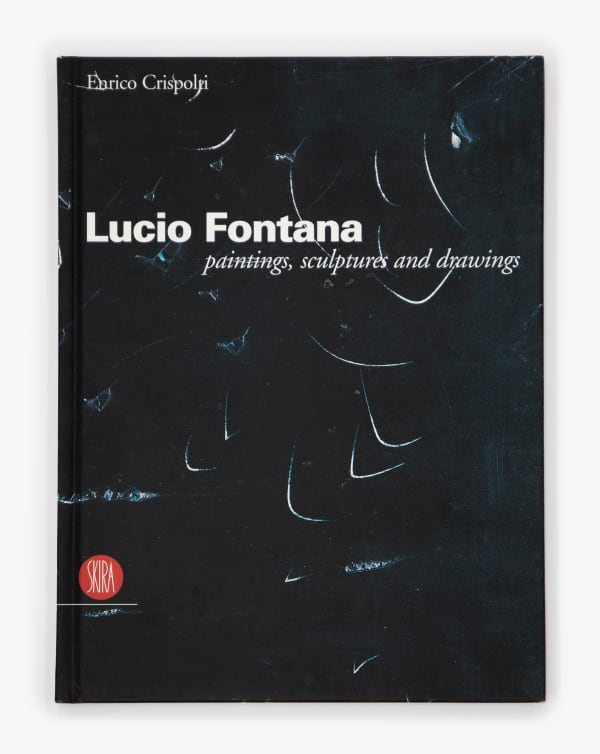
Lucio Fontana
Paintings, Sculptures and Drawings 2005Hardback, 86 pagesRead more
Publisher: Skira
ISBN: 88-7624-225-2
Dimensions: 28.7 x 26.1 cm -
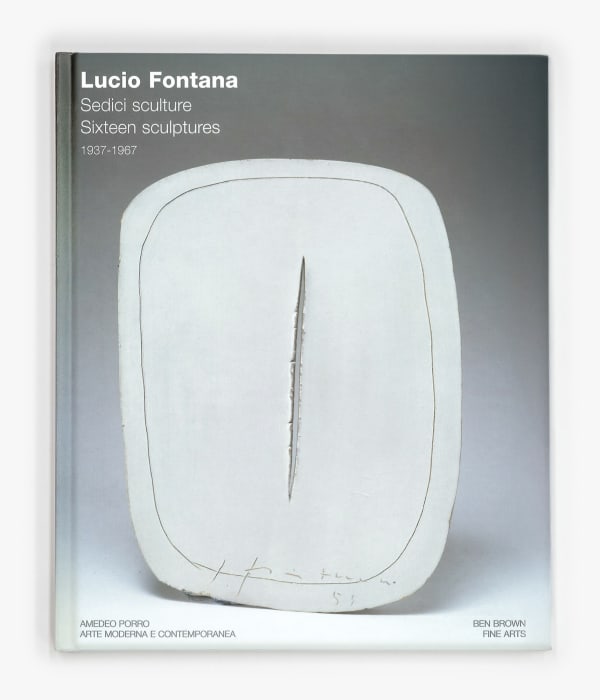
Lucio Fontana
Sixteen Sculptures 2007Hardback, 112 pagesRead more
Publisher: SilvanaEditoriale
ISBN: 97888-3661014-3
Dimensions: 28.7 x 23.8 cm -

Lucio Fontana
Ambiente spaziale con tagli, 1960 2019Hardback, 42 pagesRead more
Dimensions: 30.7 x 22.7 cm -
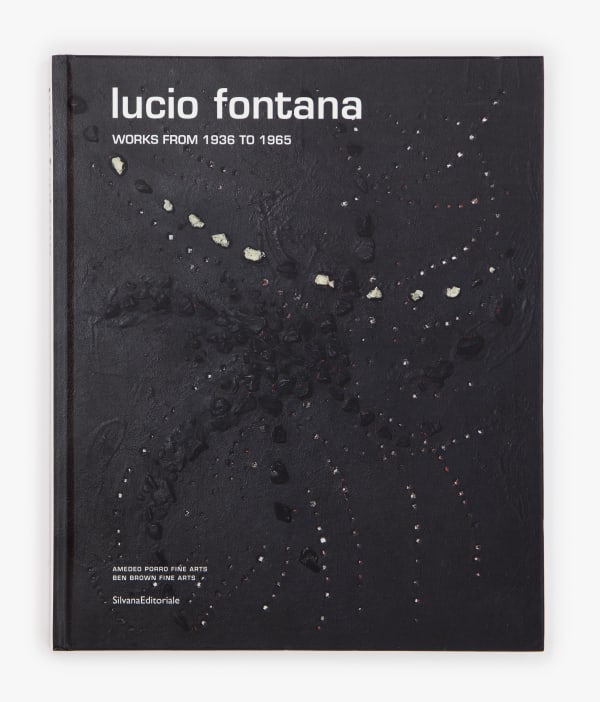
Lucio Fontana
Works from 1936 to 1965 2015Hardback, 96 pagesRead more
Dimensions: 28.6 x 23.6 cm
-

Lucio Fontana
From Figuration to Abstraction Ben Brown Fine Arts, 2021Hardcover, 110 pagesRead more
Publisher: Ben Brown Fine Arts
Dimensions: 26 x 21 x 1cm -

From de Chirico to Cattelan
A Survey of 20th Century Italian Art 2012Hardback, 72 pagesRead more
Dimensions: 30.6 x 22.7 cm -

Heinz Mack/Lucio Fontana
2010Paperback, 56 pagesRead more
Dimensions: 29 x 24.1 cm
